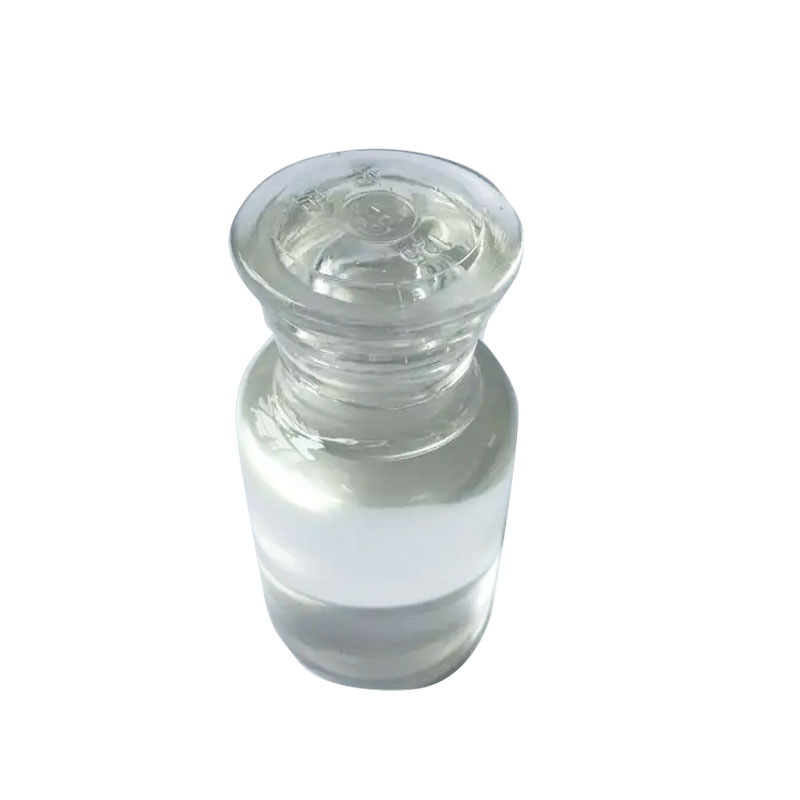Products Description of 1,3-Dihydroxyacetone CAS#96-26-4Dihydroxyacetone is a naturally occurring ketose that is biodegradable, edible and non-toxic to the human body and the environment.
Contact Now
Products Description of Tebuconazole CAS#107534-96-3Tebuconazole is a trazole fungicide. It is taken up by plants and transported within tissues. It is used as a seed dressing, which works effectively against various smut and bunt diseases of cereals. As foliar spray tebuconazole controls numerous phathogens such as rust species, powdery mildew, and scale in various crops.
Contact Now
Products Description of CALAMINE CAS#8011-96-9Calamine is also known as Lugan Stone, Gan Stone, Lugan Stone, Sheep Liver Stone, Fushui Gan Stone, Luyan Stone, and Dry Stone. It is an irregular block, flat or round, of varying sizes, with a white or light red surface, depressions or small holes, and powdery. It is light and loose, fragile, white or light red in cross section, granular, and has small pores, and is hygroscopic.Calamine is an ore of the carbonate mineral smithsonite. Calamine tastes sweet, flat, warm, and non-toxic.
Contact Now
Products Description of (Hexadecylamidopropyl)trimethylammonium chlorideCAS#51277-96-4White powder(hexadecylamidopropyl)trimethylammonium chloride Chemical Propertiesdensity 1.029[at 20℃]vapor pressure 0Pa at 20℃Water Solubility 203mg/L at 20.1℃LogP2.49 at 25℃EPA Substance Registry System1-Propanaminium, N,N,N-trimethyl-3-[(1-oxohexadecyl)amino]-, chloride (51277-96-4)Factory and Equipment ShowFast delivery timeInventory 2-3 working days New production 7-10 working days
Contact Now
Products Description of 3,4-Dibromothiophene CAS#3141-26-23,4-Dibromothiophenol is a colorless to pale yellow liquid with a boiling point of 221-222°C and a melting point of 4-5°C.3,4-Dibromothiophene Chemical PropertiesMelting point 4-5 °C (lit.)Boiling point 221-222 °C (lit.)density 2.188 g/mL at 25 °C (lit.)refractive index n20/D 1.640(lit.)Fp >230 °Fstorage temp. Keep in dark place,Sealed in dry,Room Temperatureform Liquidcolor Clear colorless to yellowSpecific Gravity2.188BRN 107642InChIKeyVGKLVWTVCUDISO-UHFFFAOYSA-NCAS DataBa
Contact Now
Products Description of Sodium mercaptobenzothiazole CAS#2492-26-4Sodium 2-Mercaptobenzothiazole is a compound with a molecular weight of 189.22 and a molecular formula of C7H4NNAS2.Sodium mercaptobenzothiazole Chemical PropertiesMelting point -6 °CBoiling point 103 °Cdensity 1,255 g/cm3vapor pressure 0Pa at 25℃storage temp. under inert gas (nitrogen or Argon) at 2-8°Cform liquidcolor White to Orange to GreenWater Solubility >=10 g/100 mL at 20 ºCCAS DataBase Reference2492-26-4(CAS DataBase Reference)EPA Substance Registry SystemSodium mercaptobe
Contact Now
Products Description of Sulfonic acids, petroleum, sodium salts CAS#68608-26-4White powderSulfonic acids, petroleum, sodium salts Chemical PropertiesBoiling point 1042.61℃[at 101 325 Pa]vapor pressure 0Pa at 25℃Water Solubility 0.065ng/L at 25℃LogP22.12 at 25℃EPA Substance Registry SystemPetroleum sulfonic acids, sodium salts (68608-26-4)Factory and Equipment ShowFast delivery timeInventory 2-3 working days New production 7-10 working days
Contact Now
Products Description of Octadecanamide CAS#124-26-5Stearamide emulsion is a white emulsion. The product is non-toxic, non-polluting, non-hazardous and green and environmentally friendly.
Contact Now
Products Description of Atorvastatin intermediate M4 CAS#125971-96-2Used as an intermediate in atorvastatin series2-[2-(4-Fluorophenyl)-2-oxo-1-phenylethyl]-4-methyl-3-oxo-N-phenylpentanamide Chemical PropertiesMelting point 196-1980CBoiling point 631.4±55.0 °C(Predicted)density 1.211storage temp. Sealed in dry,2-8°Csolubility Chloroform (Slightly, Heated), DMSO (Slightly, Sonicated), Ethyl Acetate (Slightly)pka11.52±0.59(Predicted)form Solidcolor White to Off-WhitePH6.49 at 25℃ and 13.64g/LCAS DataBase Reference125971-96-2(CAS DataBase Reference) F
Contact Now
Products Description of Inhibitor 701 99% CAS#2226-96-2Inhibitor 701 is a nitroxide free radical inhibitor, which is suitable for preventing the self-polymerization of olefins and unsaturated monomers during production, separation, refining, storage and transportation, and controlling and regulating the degree of polymerization of olefins and their derivatives in organic synthesis reactions2.
Contact Now
Products Description of 2-Chlorothiophene CAS#96-43-52-Chlorothiophene is used as an intermediate in organic synthesis and medicine. 2-Chlorothiophene CAS#96-43-5 Chemical PropertiesMelting point -71.9 °CBoiling point 127-129 °C (lit.)density 1.286 g/mL at 25 °C (lit.)refractive index n20/D 1.547(lit.)Fp 73 °Fstorage temp. 2-8°Csolubility soluble in Chloroformform LiquidSpecific Gravity1.286color Clear colorless to light brownWater Solubility INSOLUBLEBRN 104652Stability:VolatileInChIKeyGSFNQBFZFXUTBN-UHFFFAOYSA-NC
Contact Now
Products Description of 3-MERCAPTOPROPIONIC ACID CAS#107-96-03-Thiopropionic acid is a direct raw material in organic chemicals and is used in pharmaceutical intermediates and electronic chemicals; it is used as an intermediate in the pharmaceutical Fenal, and it is also used as a stabilizer for polyvinyl chloride.
Contact Now
2-Ethylhexyl Nitrate CAS#27247-96-7Mainly used as cetane number improver for diesel fuel. Adding an appropriate amount of 2-ethylhexyl nitrate to diesel can significantly increase the cetane number of diesel and improve the combustion performance of diesel.
Contact Now
Products Description of Direct Pigment Red 122 CAS#980-26-7Pigment Red 122 is an all-around pink, it belongs to Quinacridone chemistry, application covers all kinds of polymers. Comparable with Clariant Pink E and E 01. P.R.122 has higher tinting strength than pigment violet 19, it is with excellent resistance to immigration and heat stability. PR 122 dissolves in its medium and changes color accordingly at low concentrations.
Contact Now
Products Description of 1,3-Dimethylurea CAS#96-31-11,3-Dimethylurea, an organic chemical substance, CAS number: 96-31-1, molecular formula: C3H8N2O.1,3-Dimethylurea Chemical PropertiesMelting point 101-104 °C(lit.)Boiling point 268-270 °C(lit.)density 1.142vapor pressure 6 hPa (115 °C)refractive index 1.4715 (estimate)Fp 157 °Cstorage temp. Store below +30°C.solubility H2O: 0.1 g/mL, clear, colorlesspka14.57±0.46(Predicted)form Crystalscolor WhitePH9.0-9.5 (100g/l, H2O, 20℃)Water Solubility 765 g/L (21.5 ºC)BRN 17
Contact Now
Products Description of 2,4,6-Tri-tert-butylphenol CAS#732-26-3Organic synthesis. Aviation gas oil antioxidant. Anti-aging agent for natural rubber and synthetic rubber. Low-efficiency stabilizer for synthetic rubber.
Contact Now
Products Description of 6-AMINOISOQUINOLINE CAS#23687-26-56-Aminoisoquinoline is a nitrogen heterocyclic compound. Nitrogen heterocyclic compounds have very good medicinal value and medical value.
Contact Now
Products Description of 5-{4-[2-(5-Ethyl-2-pyridyl)ethoxy]benzyl}-2-imino-4-thiazolidinone CAS#105355-26-8Organic and pharmaceutical synthesis intermediates, can be used to synthesize pioglitazone hydrochloride.5-{4-[2-(5-Ethyl-2-pyridyl)ethoxy]benzyl}-2-imino-4-thiazolidinone Chemical PropertiesMelting point 187-188°CBoiling point 557.4±60.0 °C(Predicted)density 1.28storage temp. Sealed in dry,2-8°Csolubility DMSO (Slightly, Heated), Methanol (Slightly, Heated)pka5.53±0.22(Predicted)form Solidcolor Light Brown to BeigeCAS DataBase Reference105355-26-8(C
Contact Now
Products Description of 2,4-di-tert-butylphenol CAS#96-76-42,4-Di-tert-butylphenol widely exists in plants and is also an important intermediate for fine chemical products. It is mainly used to prepare co-antioxidant 168, and is also used to prepare polyisobutylene, polyamide, polycarbonate, etc.; it is still It can be used to produce antioxidant Chemicalbook (300, 314), ultraviolet absorber, light stabilizer 120, dyes and textile auxiliaries, and 2402 resin.
Contact Now
Products Description of 1,2-Bis(2-chloroethoxy)ethane CAS#112-26-51,2-Bis(2-chloroethoxy)ethane is a transparent to slightly yellow liquid at room temperature and pressure, and is insoluble in water. It is often used as a material chemical intermediate and a reaction solvent in organic chemical reactions.
Contact Now
Products Description of 5-Nitrosalicylic acid CAS#96-97-95-Nitrosalicylic acid is a chemical substance with the chemical formula C7H5NO5 and a molecular weight of 183.12.5-Nitrosalicylic acid Chemical PropertiesMelting point 228-230 °C(lit.)Boiling point 316.77°C (rough estimate)density 1,65 g/cm3vapor pressure 0Pa at 25℃refractive index 1.6280 (estimate)storage temp. no restrictions.solubility water: soluble1g in 1475ml(lit.)form LiquidpkapK1:2.12 (25°C)color Clear yellow-beige to orange-brownWater Solubility Soluble in water 1g/1475
Contact Now
Products Description of Methyl tetrahydropyran-4-carboxylate CAS#110238-91-0Tetrahydropyran-4-carboxylic acid methyl ester is a clear liquidMethyl tetrahydropyran-4-carboxylate Chemical PropertiesMelting point -33°CBoiling point 197°Cdensity 1.080 g/mL at 20 °C(lit.)Fp 86°Cstorage temp. Sealed in dry,Room Temperatureform liquidcolor ClearBRN 114974InChIKeyCNCMVGXVKBJYNU-UHFFFAOYSA-NCAS DataBase Reference110238-91-0(CAS DataBase Reference)Safety InformationHazard Codes XiRisk Statements 36-36/37/38Safety Statements 26-37
Contact Now
Products Description of N,N-Di-Sec-Butyl-P-Phenylenediamine CAS#101-96-2N,N-di-sec-butyl-p-phenylenediamine is a brown-red liquid. It is an amine antioxidant with excellent properties. It is especially suitable for use as an additive for cracking or thermal cracking gasoline (gasoline with high olefin content). It can effectively prevent olefin oxidation. Produce gel.
Contact Now
Products Description of N,N'-Methylenebisacrylamide CAS#110-26-9N-N'-methylenebisacrylamide is an amine organic compound and is widely used as a chemical reagent. It is used in the textile industry to produce thickeners and adhesives, and in oil mining to produce leak-stopping agents. It is also widely used in leather chemicals, printing and many other fields. It is a quality product that is widely used in the market.
Contact Now



















![5-{4-[2-(5-Ethyl-2-pyridyl)ethoxy]benzyl}-2-imino-4-thiazolidinone CAS#105355-26-8](https://d3rnfhc14zcmdf.cloudfront.net/cdn/ff/gm15_9BNSlbRhwqzlF1wuCfBgbbPWFKW4n1ojiSFsP8/1718275924/public/styles/chanpinzhutu/public/2024-06/%E7%99%BD%E8%89%B2%E7%B2%89%E6%9C%AB%20%282%29_4.jpg?itok=4_cOesiZ)















